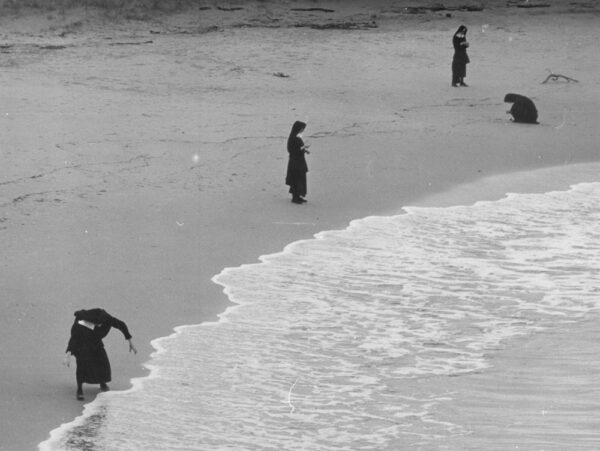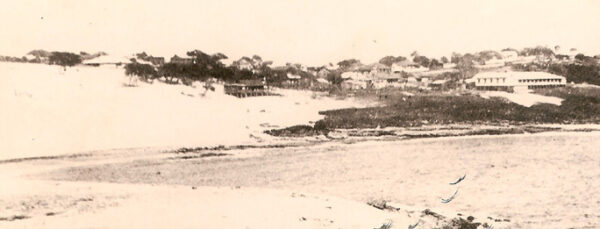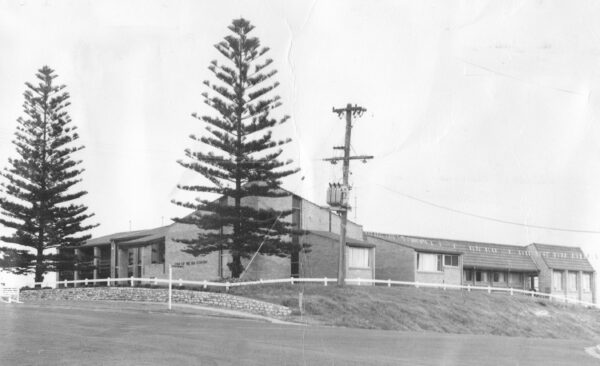Yamba’s Catholic Community
For a long time, Yamba did not have sufficient population to support a resident minister or priest of any denomination. A plot of land had been surveyed for a Roman Catholic church on Pilot Hill in 1878 but in 1880 the Legislative Assembly decreed that no more free grants were to be given to churches.
In 1882, Palmer’s Island was separated from Maclean, and a new Catholic parish created covering Palmer’s Island, Chatsworth, Yamba and Iluka. Before this, Mass was celebrated at the Palmers Island home of Thomas Landrigan with the priest coming by rowing boat from Grafton about twice a year. Catholic settlers on Palmer’s Island and Iluka donated money and land to build small churches but even then, only occasional services were held at those venues as each trip was done by rowing boat.

In fact, after the convent and school were opened above locally named Convent Beach at Yamba in July 1900, the elderly Father Reade had to celebrate Holy Mass at all four centres of Maclean, Palmers Island, Yamba and Iluka. As a result, Yamba had mass in the little school building on Sunday only once every 4-6 weeks. The priest had to drive his horse and buggy over a rough and often boggy roadway from Palmers Island to Yamba, then up the hill to the Convent following a devious track through the bush.
Following the removal of the Sisters of Mercy Convent in 1910 from its isolated location to the corner of Coldstream/Clarence Streets, the original Angourie school building was also moved there and used as a church and an infant’s school.
When the Palmers Island catholic church was dismantled in 1931, the materials were used to build a weatherboard church on the corner of Yamba/Beach Streets. This church was dedicated to St James on 23 March 1931.



A hall, originally from St Dominic’s Convent School (opened in 1928 on Harwood Island), was transported in 1957 to the Yamba Convent site in Clarence Street. There it was used as a classroom. In 1975, it was again moved to Beach Street behind the Catholic Church to become a community hall. This same hall was moved yet again in January 1995 to become the Community Hall at the Honeyman Parkland at Wooloweyah following efforts by Jill Brisbane and Geoff Hage as principal co-ordinators.

The Convent school closed in 1964 and local children had to travel to St Joseph’s Primary in Maclean to continue their catholic education. Meanwhile, in 1969, The Star of the Sea Convent was rebuilt and officially opened on 11 January 1970, functioning as a retreat for the nuns before being redeveloped between 1993 and 1999 as a conference centre and short-term accommodation. In 1975, St James Catholic church was rebuilt in brick on the same site in Yamba Street, where it still stands today.
It was not until 1996 that St James Primary school was built on donated land on Carr’s Drive. In 1997, 2007 and 2017, time capsules have been buried on school grounds containing artefacts and student work from those years. Every ten years these capsules are opened, shared with the community then re-buried along with a new capsule. As a relatively new school in Yamba, they are working hard to establish their own history – proudly using an antique wooden altar from the original Clarence Convent and displaying wooden crosses created by carpenters who built the school in 1997. A cedar door, from the original wooden church built in 1931, has also been installed in the front office of the school. In common with other local schools, they have also shared their collection of class photos with the Yamba Museum, for which we thank them.
John McNamara and Sue Spence, Port of Yamba Historical Society.